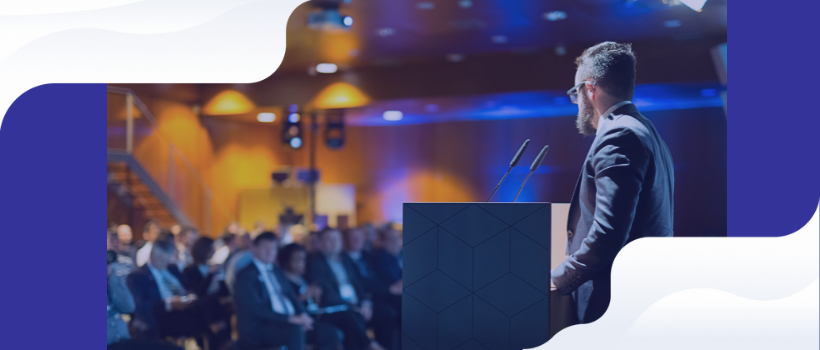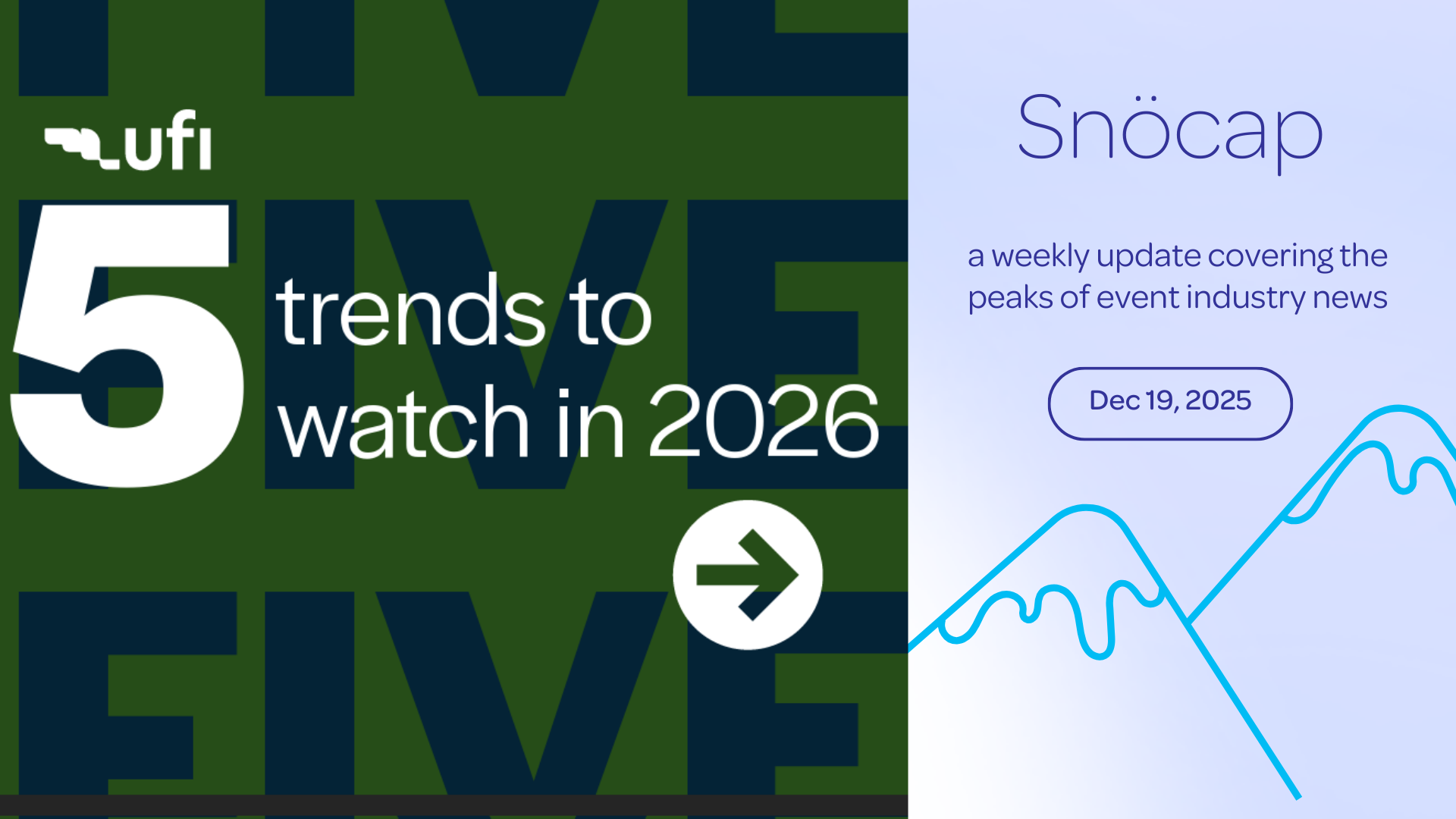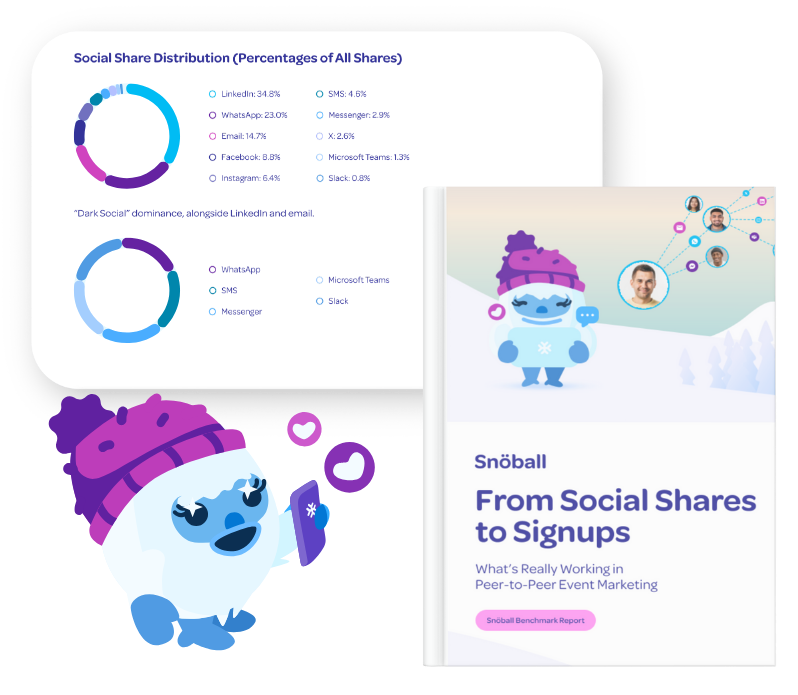Finding the right speakers for your event is tough.
In a March 2025 round-table of 30 event-content professionals hosted by Sessionboard, “getting the right submissions” was ranked the #1 challenge in their Call-for-Papers process.
This is backed by industry data – only 19% of planners say the speakers they book truly understand who’s in the audience (PCMA 2024 Speaking Industry Benchmark Report).
That mismatch explains why quality proposals are hard to come by.
Good speakers are rare, and most of them are being sought by bigger, flashier events. Many of these industry leaders are time-pressed and are repelled by difficult call for speakers form or lack of information and low visibility of other events.
With rising expenses and high pressure to build a great agenda, it’s become hard to find the right folks and fill out the roster.
And those “last-call” frantic emails not too helpful.
The answer lies in effectively positioning – backed by psychology and behavioral science.
Here are 10 behavioral nudges (backed by psychology) you can use to boost last-minute speaker submissions and get more attractive proposals for your event.
1. The Scarcity Principle: “Only 3 speaking slots left!”
The psychology: People place a higher value on things they perceive as scarce. When something is limited, it feels more exclusive and urgent. It triggers our fear of missing out (FOMO).
How to use It: Instead of just listing a deadline, add a layer of scarcity to your messaging. Use a countdown timer on your speaker submission landing page. In your emails and social posts, mention the limited number of speaking slots available.
- Email Subject Line: “Only 48 hours left to claim one of our final 3 speaking spots”
- Landing Page Copy: “Submission Portal Closes Friday | Only 5 Slots Remain”
This simple shift changes the dynamic from “please apply” to “you might miss this opportunity.”
It’s one of the most effective psychology tactics for speaker recruitment. Make sure your landing page is optimized to showcase this urgency.
Related Reading: 11 Must-Have Landing Page Elements for Your Event Website
2. Social Proof: “Join 50+ industry leaders”
The psychology: When people are uncertain, they look to the actions and behaviors of others to determine their own. If everyone else is doing it, it must be the right thing to do.
How to use it: Leverage the speakers you already have. With their permission, showcase their headshots, names, and company logos prominently on your speaker submission page. If you have a high number of submissions already, feature that number.
- “Join confirmed speakers from Google, Salesforce, and HubSpot.”
- “Be part of a lineup of 80+ experts shaping the future of our industry.”
This creates a powerful bandwagon effect. Potential speakers see the calibre of their peers and are more inclined to join.
Your event’s social wall can be a great place to highlight these confirmed speakers and build buzz.
Read more: How to amplify your event’s social proof with a Social Wall?
3. The Authority Nudge: “As endorsed by…”
The psychology: People tend to obey authority figures or trust credible sources. Logos from respected organizations, media outlets, and industry bodies act as a powerful stamp of approval.
How to use it: Your speaker portal shouldn’t exist in a vacuum. Surround it with trust signals.
Feature a section titled “Our Partners,” “As Seen In,” or “Supported By” and display the logos of your top sponsors, media partners, and any relevant industry associations.
This borrowed credibility makes your event seem more legitimate and prestigious, making a speaking role more attractive. Even if a potential speaker hasn’t heard of your event, they’ve heard of Forbes or the industry association endorsing you.
4. Reciprocity: Give a little something
The psychology: Humans are wired to return favors. When you give someone something of value for free, they feel a subtle obligation to give something back.
How to use it: This is a fantastic nudge for last-minute speaker outreach techniques. Offer a small, valuable gift to everyone who submits a complete proposal, regardless of whether it’s accepted.
Ideas for reciprocal gifts:
- A free copy of an exclusive industry report.
- A 25% discount on an All-Access Pass to the event.
- Early access to the attendee networking portal.
This small act of giving can significantly increase speaker applications by making people feel appreciated for their time and effort upfront.
More Ideas: 13 proven ways to incentivize and reward your event influencers in 2025
5. The IKEA Effect: Let them help build it
The psychology: We place a disproportionately high value on things we partially create. Assembling that flat-pack furniture yourself makes you love it more than a pre-built cabinet.
How to use it: Involve your potential speakers in the creation of your agenda. Before your call for papers officially opens, send an email to your prospect list asking them to vote on key session themes or suggest new topic tracks.
This co-creation process gives them a sense of ownership. They become invested in the event’s content before they’ve even applied, making them far more likely to submit a proposal for a track they helped shape.
6. Commitment and Consistency: Start small
The psychology: Once we make a small commitment, we feel an internal pressure to remain consistent with that choice and are more likely to agree to larger requests later.
As behavioral science guru Robert Cialdini notes in Influence, “Once we have made a choice or taken a stand, we will encounter personal and interpersonal pressures to behave consistently with that commitment.”
How to Use It: Don’t ask for a full, detailed abstract, bio, and headshot right away. That’s a huge ask. Instead, start with a micro-commitment. Use a simple “Express Your Interest” form that asks for just a name, email, and a potential session title.
Once they’ve made that tiny commitment, you can follow up with a request for the full submission. They are now psychologically primed to finish what they started.
7. The Framing Effect: It’s all in how you say it
The psychology: The way information is presented (the “frame”) has a massive impact on decision-making. A yogurt that is “80% fat-free” sounds healthier than one that “contains 20% fat,” even though they are identical.
How to use it: How do you handle a deadline extension?
- Bad Frame: “We’ve extended our speaker submission deadline.” (This signals you didn’t get enough submissions and might feel desperate.)
- Good Frame: “Due to overwhelming interest, we’ve opened a special 48-hour extended window for a final round of applications.” (This frames it as an exclusive, final opportunity.)
Apply this to all your speaker submission strategies. Frame speaking at your event not as a favour to you, but as a career-enhancing opportunity for them to build their brand in front of a curated audience.
8. The Messenger Effect: Your network is your best megaphone
The psychology: Who delivers the message is often more important than the message itself. We trust recommendations from people we know and respect far more than we trust marketing messages from a faceless organization.
How to use it: This is the foundation of peer referral marketing. Instead of just sending emails from your company, empower your existing network to spread the word. Activate your confirmed speakers, sponsors, and advisory board members.
Provide them with a simple, trackable link to share with their own networks. A personal invitation from an industry peer to “join me in speaking at this event” is incredibly persuasive.
This is where trackable event marketing becomes essential. You need a system that makes it easy for your advocates to share and for you to see which channels are driving the best results.
Automate your outreach with Snöball’s peer-to-peer marketing platform
9. The Personalization Nudge: “We loved your work on…”
The psychology: We are hard-wired to pay attention to things that are personally relevant to us. A message that says “Dear Valued Professional” gets deleted. A message that says “Hi Sarah, I saw your recent article on AI in marketing…” gets read.
How to use it: For your top-tier speaker prospects, mass outreach won’t cut it. Use personalized outreach that shows you’ve done your homework.
Reference a specific project, article, or talk they gave. This level of detail demonstrates genuine interest and makes your invitation feel exclusive.
This sounds time-consuming, but event marketing software can help you manage and semi-automate this process, especially when integrated with speaker management platforms.
Learn More: How the Snöball and Sessionboard integration streamlines speaker promotion
10. The Endowment Effect: “Complete your draft application”
The psychology: We value something more once we feel a sense of ownership over it. Even partial ownership can create this feeling.
How to use it: Use a speaker submission portal that allows applicants to save their progress. When someone starts filling out the form and then leaves, send an automated follow-up email with the subject line “Don’t forget your draft application!”
The message frames the incomplete submission not as a failure, but as something they already own. They are psychologically more likely to return and complete it because they feel invested in the draft they started.
From panic to pipeline
Securing top-tier speakers doesn’t have to be a frenzied last-minute scramble. A recent PCMA survey highlighted that “finding and securing compelling speakers” remains a top-three challenge for event organizers.
But by moving beyond simple requests and applying these data-driven behavioral nudges, you shift from chasing speakers to attracting them.
You can create a sense of urgency, build trust with social proof, and leverage your network to do the heavy lifting. You can transform your speaker recruitment from a logistical chore into a sophisticated marketing campaign.
Snöball’s peer-to-peer marketing solutions are built on these very principles. Their social amplification tools enable you to transform confirmed speakers into powerful event promoters, using trackable links and personalized assets to drive attendance and strengthen your speaker recruitment efforts.
Shifting this mindset is key to reducing late event registrations and improving overall attendee acquisition.





